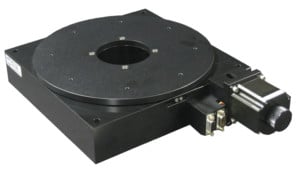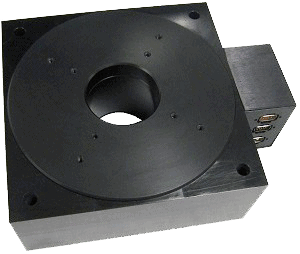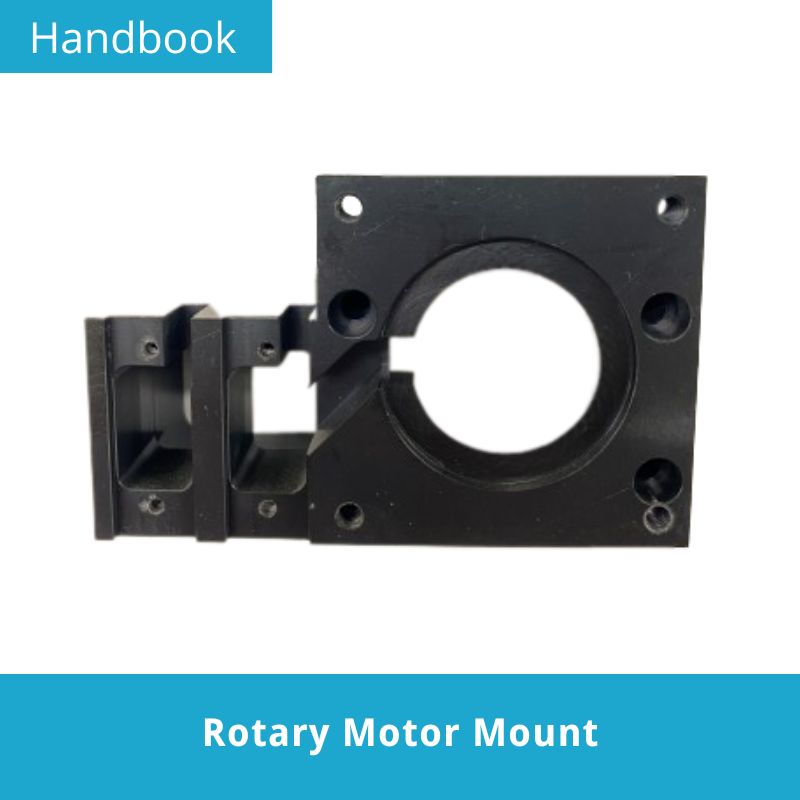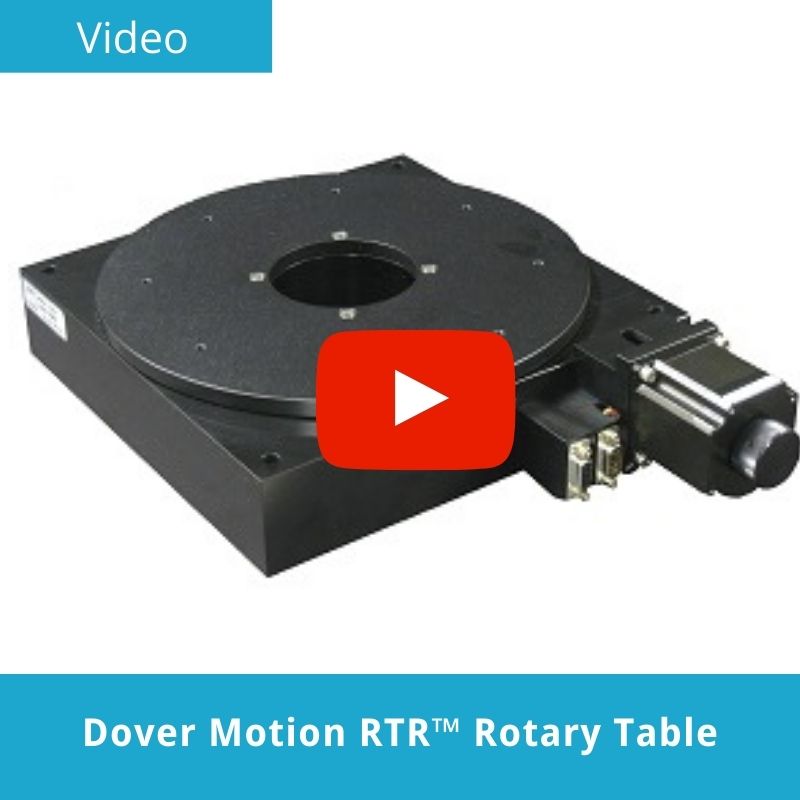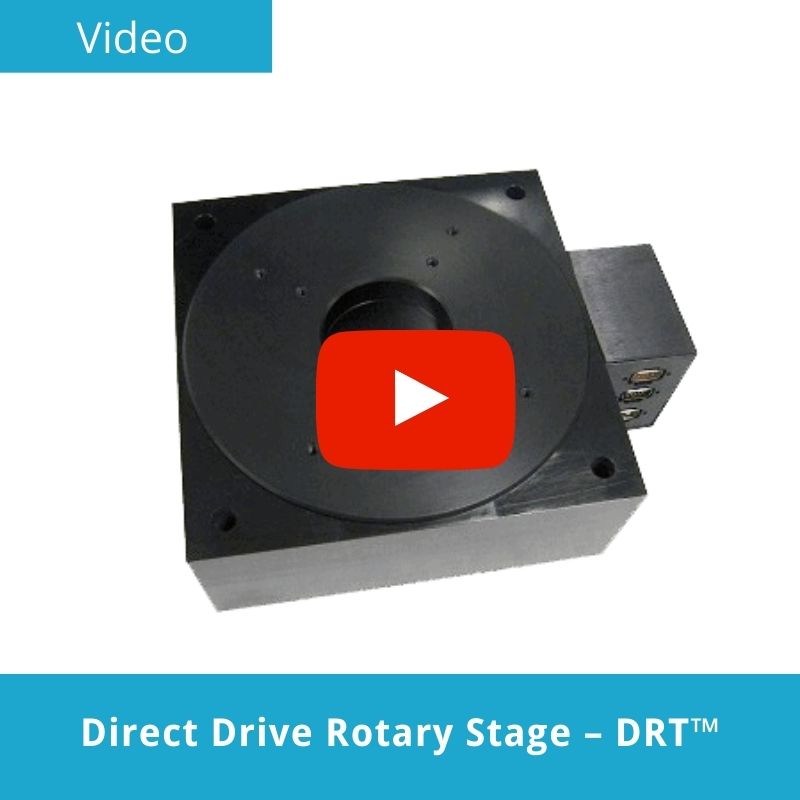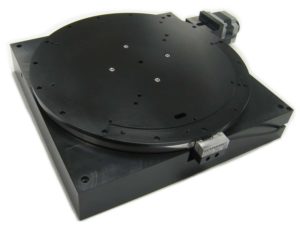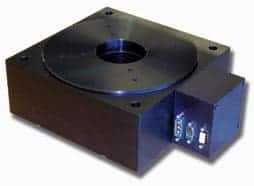Precision Rotary Stages
Precision rotary stages, also called rotation stages, are used to restrict motion to a single axis of rotation and precisely control circular position for that axis of rotation. Dover Motion offers a range of standard high precision rotary stages and rotary tables, though our core strength is collaborating with our clients to configure the right precision motion solution for their unique application.
Our RTR™ precision rotary stages are equipped with stiff crossed roller bearings and a precision worm gear drive to ensure outstanding angular accuracy and repeatability. Our DRT™ series stages utilize the direct drive technology and offer ultra-compact design.
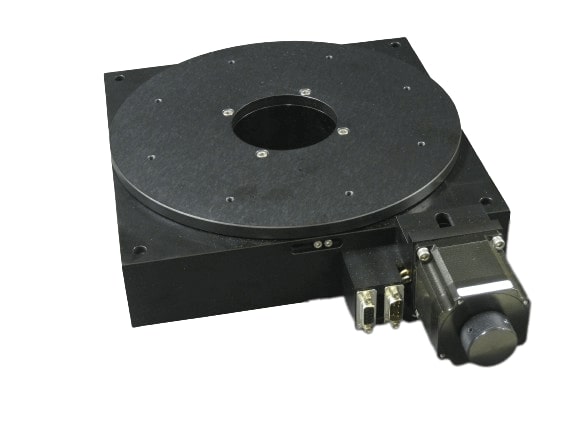
Rotary Stage Products
The RTR™ series precision rotary stages are available in 4-, 6-, 8-, 10-, and 12-inch diameter rotary stage versions that include a preloaded, anti-backlash drive assembly to provide exceptional angular accuracy and repeatability.
| wdt_ID | Travel | 360 degrees |
|---|---|---|
| 1 | Accuracy | 0.05 degree |
| 2 | Repeatability | 0.005 degree |
| 3 | Payload | 45 kg |
The DRT-100 and DRT-200 series direct drive rotary stages are ultra-compact, direct-drive rotation stages that establish a new level of price, performance, and size.
| wdt_ID | Travel | 360 degrees |
|---|---|---|
| 1 | Accuracy | +/- 150 urad |
| 2 | Repeatability | +/- 5 urad |
| 3 | Payload | 100 kg |
Additional Rotary Stage Resources
FAQ
Rotary motion, also referred to as theta, rotational motion or circular motion, occurs when an object rotates or spins about an axis. This type of motion is analyzed in much the same way as linear motion. The motion may be uniform or non-uniform, but it must be circular.
When a stage is referred to as having uniform rotary motion, this means that the moving table’s velocity and direction of motion is constant. Rotation stages can have variations in their rotary motion, however. For example, inertia can influence rotary motion in certain ways. Objects that have lots of inertia will require much more energy to change their velocity or position and require more motor torque.
Rotary Motion is perhaps the most common and important types of motion and also the most widely used in every part of our daily lives.
Three of the six degrees of freedom of every part to be positioned in a motion system are rotary: roll, pitch, and yaw. A single rotary stage, or “rotary table,” addresses all three of these through its ability to vary its mounting orientation. Many motion applications require precise rotary motion and positioning, and Dover Motion offers a wide variety of high precision rotary stages to meet your project needs.
Our rotation stages use a variety of bearing and actuator technologies. For very stiff angular positioning at low to medium speeds, we use precision lapped worms and worm gears driven by a stepper or servo motor. Worm gear drive is especially valuable if the payload is offset and the system experiences a static torque. For the highest speed and precision, we recommend direct drive rotary tables such as our DRT series.
Rotation stages typically consist of a platform that rotates relative to a fixed base, a stepper or servo motor, and a gear or belt system.
In a rotation stage, a platform allows precise angular position control. You connect it to a motor and then add an electronic device, such as a computer or electronic controller, to control the motor. Lastly, you attach a gear or belt system to the motor's output, which provides the necessary torque to achieve the desired platform rotation.
While our rotary stages can be used as complete single-axis positioners, in many cases they are integrated with additional linear or rotary axes. A common example is to add a rotation stage to the top of an XY stage. In this case, it is important to consider the total range of travel. For applications where the payload must be aligned after loading it onto the stage stack, a limited travel of +/- 5 degrees may be sufficient. In other applications, 360-degree or unlimited rotation may be required.
Rotary stages, including high precision rotary stages, can also be mounted to each other, allowing the customer’s part to be rotated in multiple axes. In one such example we designed a stack of three rotary tables that was used to move a miniature spherical laser fusion target in three rotational degrees of freedom during laser micromachining.
No, our standard motorized rotary stage has only 1 limit switch. The switch is typically wired to pin 2 on the limit encoder connector. The limit switch is intended to be used for homing. The homing routine will work with an initial positive or negative jog move of the motorized rotary stage until the limit switch triggers. If an encoder is also used, the home or zero position can then be set at the point where the limit switch is triggered.

